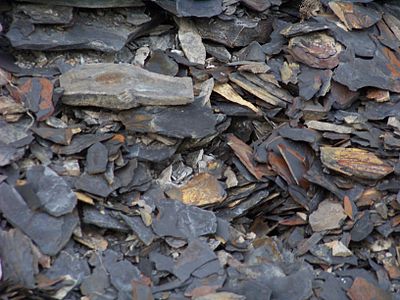Source rock
A source rock is a rock that is capable of generating or that has generated movable quantities of hydrocarbons.
The first factor to be assessed in an exploration play in an area yet to be drilled is whether a source rock is present. If so, then we ask, “How good is it? Will it generate oil or gas? Has it generated hydrocarbons already?” To answer these questions, we must know the basics of what constitutes a source rock, how to classify source rocks, and how to estimate potential. This article provides a background in these fundamentals.
Definitions of source rock types
Source rocks can be divided into at least four major categories:
- Potential
- Effective
- Relic effective
- Spent
These categories and their definitions are shown in the table below.
| Type | Definition |
|---|---|
| Potential source rock | Rock which contains organic matter in sufficient quantity to generate and expel hydrocarbons if subjected to increased thermal maturation. |
| Effective source rock | Rock which contains organic matter and is presently generating and/or expelling hydrocarbons to form commercial accumulations. |
| Relic effective source rock | An effective source rock which has ceased generating and expelling hydrocarbons due to a thermal cooling event such as uplift or erosion before exhausting its organic matter supply. |
| Spent source rock | An active source rock which has exhausted its ability to generate and expel hydrocarbons either through lack of sufficient organic matter or due to reaching an overmature state. |
Characterizing source rocks
To be a source rock, a rock must have three features:
- Quantity of organic matter
- Quality capable of yielding moveable hydrocarbons
- Thermal maturity
The first two components are products of the depositional setting. The third is a function of the structural and tectonic history of the province.
Determining source rock potential
The quantity of organic matter is commonly assessed by a measure of the total organic carbon (TOC) contained in a rock. Quality is measured by determining the types of kerogen contained in the organic matter. Thermal maturity is most often estimated by using vitrinite reflectance measurements and data from pyrolysis analyses.
The table below shows the most common methods used to determine the potential of a source rock.
| To determine… | Measure… |
|---|---|
| Quantity of source rock | Total organic carbon (TOC) present in the source rock |
| Quality of source rock |
|
| Thermal maturity of source rock |
|
See also
